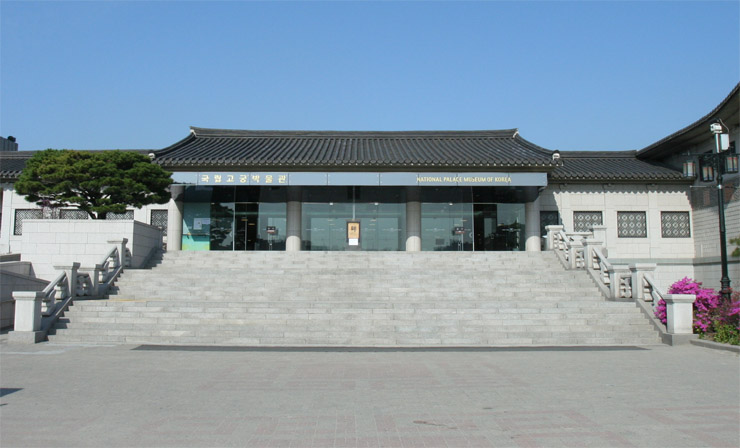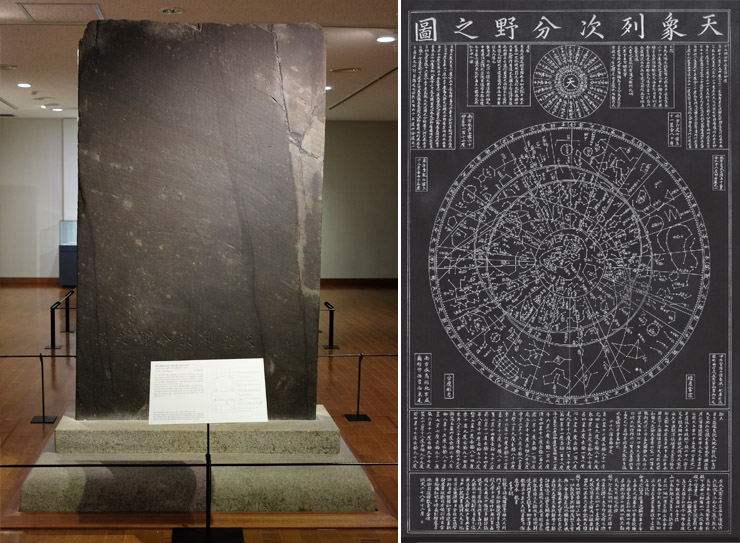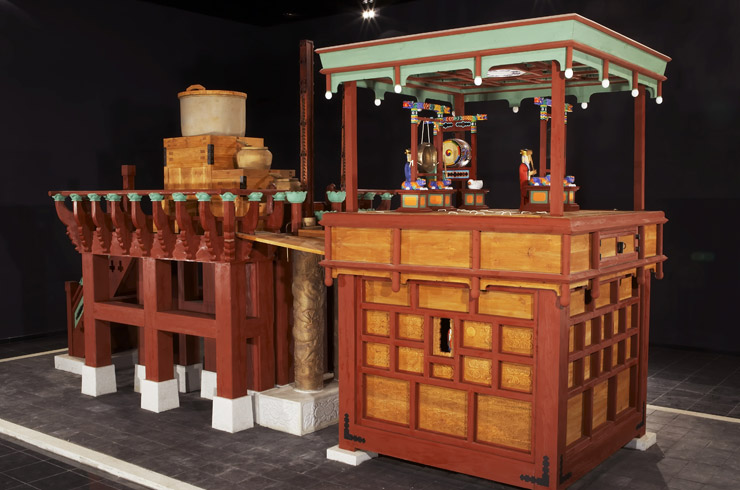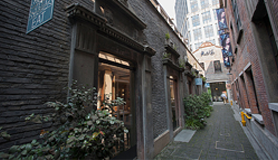HMAP World Story

국립고궁박물관
문화재청은 1980년대 중반부터 창경원을 창경궁으로 복원하고 일제에 의해 헐린 경복궁 전각들을 복원해나가기 시작했다. 그 과정에서 1992년 10월에는 4대 궁궐과 종묘, 능원 등에 흩어져 있던 궁중문화재를 모아 덕수궁 석조전에 궁중유물전시관을 개관하기도 했다. 하지만 덕수궁 석조전은 전시공간과 수장 공간이 턱없이 부족하고 규모조차 너무 작아 왕실문화를 홍보하고 연구 보존하는 데 수많은 어려움에 부딪혔기에 문화재청은 1993년 옛 국립중앙박물관이자 조선총독부 건물이 있었던 자리에 왕궁박물관을 개관하기로 결정하고 조선총독부 건물을 철거하였다. 이후 철저한 준비 끝에, 광복 60주년인 2005년 8월 15일에 덕수궁 석조전에서 경복궁 내 옛 국립중앙박물관 자리로 이전 개관하였다.
[자세히보기]출처 : Wikipedia
National Palace Museum of Korea
The museum first began as the "Korean Imperial Museum", which was established in September 1908 and was originally located in Changgyeonggung Palace. On November of the following year, the museum was opened to the public. However, on April 1938, the ruling Japanese government renamed the museum to the "Museum of Yi dynasty".
[Learn more]Source : Wikipedia
□ Cheonsang Yeolchabunyajido / 천상열차분야지도 (天象列次分野之圖)

천상열차분야지도 (天象列次分野之圖)
천상열차분야지도는 조선 초기부터 석각본, 목판본, 필사본 등으로 제작·보급된 한국의 전천천문도이다. 천상열차분야지도 중 가장 오래된 것은 태조 석각본으로 가로 122.8 cm, 세로 200.9 cm 크기의 돌에 새겨졌다. 태조 석각본은 국보 228호로 지정되었다.
[자세히보기]출처 : Wikipedia
Cheonsang Yeolchabunyajido
Cheonsang Yeolcha Bunyajido is a fourteenth-century Korean star map, copies of which were spread nationwide in the Joseon Dynasty. The name is sometimes translated as the "chart of the constellations and the regions they govern."
[Learn more]Source : Wikipedia
□ Clepsydra (Water Clock) / 자격루(自擊漏)

자격루 (自擊漏)
자격루는 조선 세종 때의 물시계로, 자동으로 시간마다 종이 울리도록 한 국가 표준시계이다. 장영실과 김조 등이 2년 간 제작하여 세종 16년 8월 5일 완성·발표하였다. 이후 중종 31년에 이전의 자격루를 개량하여 다시 제작하였으며 일제강점기와 한국전쟁을 거치면서 일부가 보존되어 국보 제229호로 지정되었다. 국보로 지정된 창경궁 자격루는 일제가 1938년에 덕수궁 광명문으로 옮겨 전시하다가, 광명문의 원 위치 이전에 따라 복원 및 보수 작업을 거쳐 국립고궁박물관으로 옮겼다.
[자세히보기]출처 : Wikipedia
Jagyeongnu (Water Clock)
The Borugak Jagyeongnu, classified as a scientific instrument, is the 229th National Treasure of South Korea and was designated by the South Korean government on March 3, 1985. The water clock is currently held and managed by the National Palace Museum of Korea in Seoul. It dates to the time of King SeoJong of the Joseon Dynasty.
[Learn more]Source : Wikipedia








 HOME
HOME


 0
0




